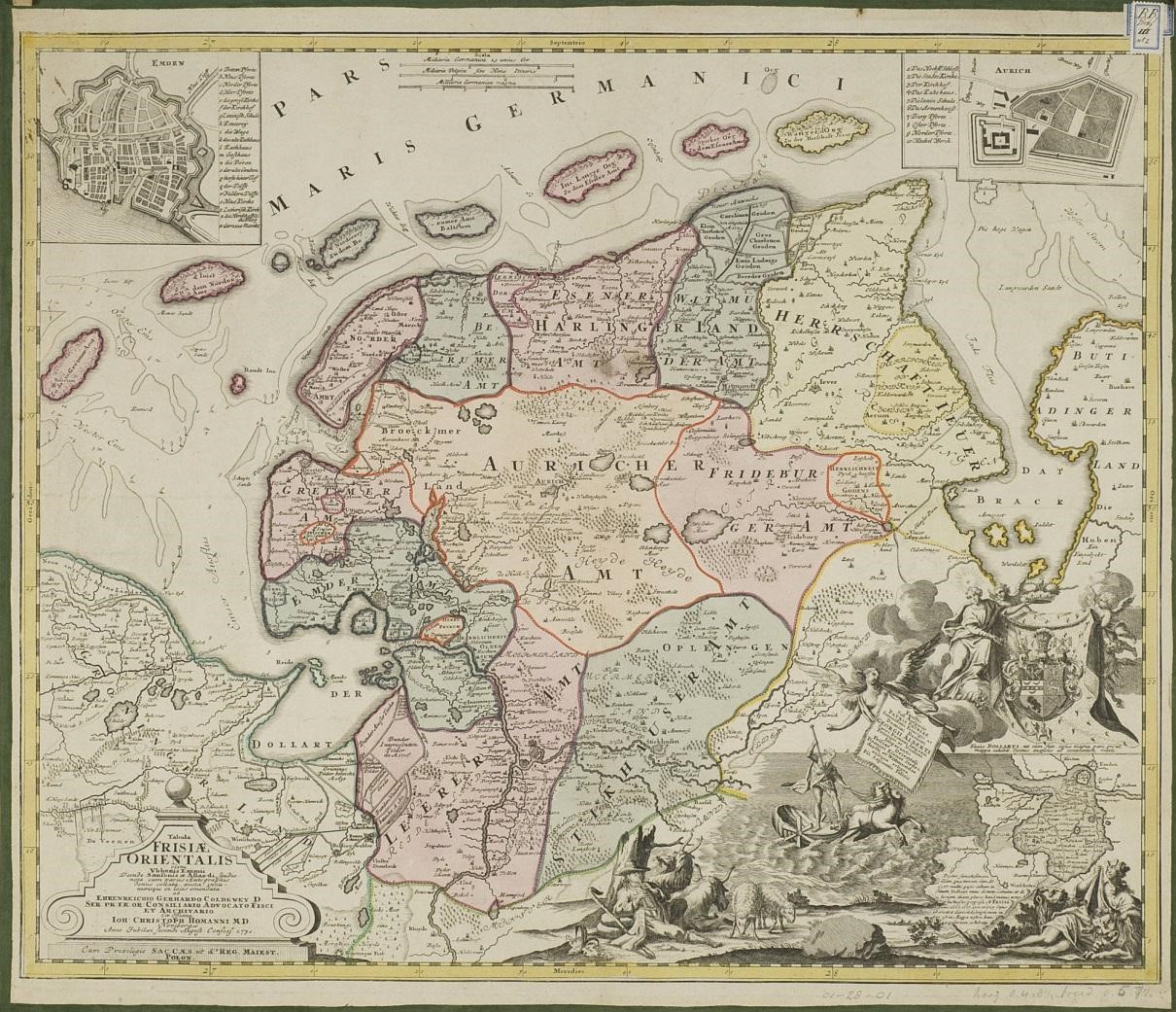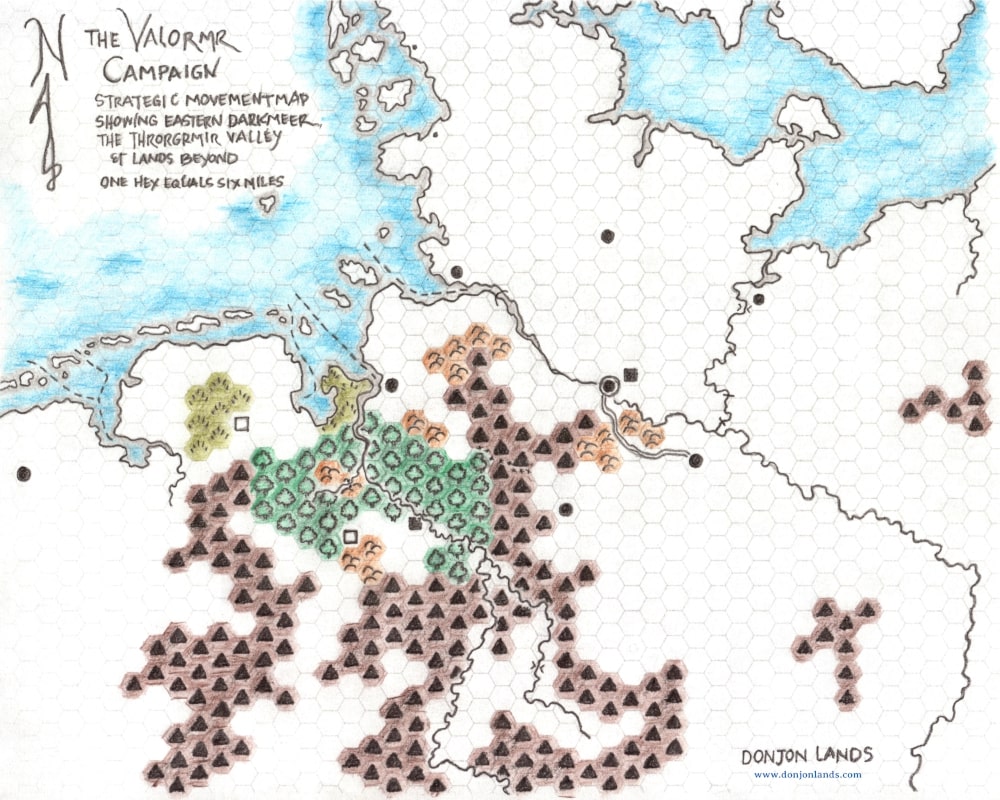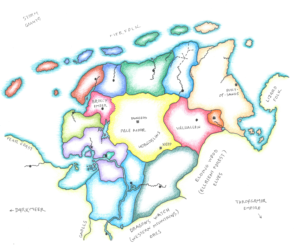Inspired by the map and the myth from last week’s “Atlantis of the Clay,” let’s make a campaign. To keep the task manageable, we’ll do only a broad overview. A DM can fill in details to suit.
I intend to follow the steps for Designing a Wilderness provided in the D&D Expert Rulebook. To begin campaign design, though, I refer to an early article from Ray Winninger’s Dungeoncraft column. Again for brevity’s sake, I won’t go through Winninger’s entire process, but the second installment of Dungeoncraft (Dragon #256) is a great way to get started. (See below Old-School D&D Campaign Building and Mapmaking Resources.)
Campaign Hook
After laying down the First Rule of Dungeoncraft, which is worth repeating to oneself every morning and every evening: “Never force yourself to create more than you must” (20), Winninger tutors the campaign builder to begin with a compelling hook. This is the “concept that captures your players’ imaginations and draws them into the game” (21). Winninger divides campaign hooks into five categories:
- Culture
- Environment
- Class or Race
- Opposition
- Situation
Even attentive readers may be forgiven for not recognizing the landmass depicted on Ubbo Emmius’s 1730 Tabula Frisiae Orientalis as the location, far into our own future, of the Keep on the Pale Moor.


From the Valormr Campaign, we know the keep was constructed by Chaos Armies commander Hadewych the Arbiter to serve as a staging area and supply outpost during the Battle of Throrgrmir. We also know the Forces of Law stormed the fortress as part of a successful plan to cut off Chaos’s supply route.
From my campaign journal, second week of spring, “Day 4, morning: Law storms Keep on the Pale Moor. Garrison destroyed. Warlock saves.”
“Saves” refers to a method, part of a simulator used to expedite the lesser battles, in which heroes and wizards are determined to survive or perish when their unit is defeated. This was the warlock’s second save.
At Valormr’s opening, the warlock was stationed with the Chaos garrison at Port-of-Sands, a day’s march east. When the Forces of Law took the port, the garrison was destroyed, and the warlock, making his first save, retreated to the keep.
Two days later, having saved again following the keep’s storming, the warlock, so I now imagine, fled into the Pale Moor… Here I see the silhouette of an opposition campaign hook.
The Valormr Campaign uses Chainmail, wherein a warlock is a wizard “able to manage” four spells. To fill out the opposition hook, I’ll read the denomination in the traditional sense: the warlock is a practitioner of the black arts who calls on demons and devils to work his malevolent magic. So, while the “warlock” may be the campaign’s arch villain (and probably further advanced in experience levels), he is accompanied by demons and devils, witches, warlocks, and other evil magic-users, as well as evil clerics and—for the old-school in it—an “evil high priest” or two.
Potential allies are lawful clerics and other members of the established church. We might invent or borrow a B/X paladin. Furthermore, I imagine the church has got its hands in secular politics. Through its influence, witchery—any dealings with infernal beings—is unlawful, the crime punishable by death.
… Fleeing deep into the moor’s boggy interior, the warlock discovered the vestiges of an ancient city, sunk beneath the mires. Within cyclopean chambers, dank and dark, much wealth and magic remained. The warlock fell upon grotesque skeletons of unknown beasts, stone vats coated in foul residues, and deep pits containing vile creatures, still living. In perilous forays, he unearthed large tomes, whose covers were embossed with gruesome faces, the pages made from human skin, and the glyphs inscribed thereon protected by dire curses.
Secrets
Winninger closes the article with the Second Rule of Dungeoncraft: “Whenever you design a major piece of the campaign world, always devise at least one secret related to that piece.” For the warlock and his discovery, I have two secrets:
Secret #1: The warlock was a traitor. After his narrow escape from Port-of-Sands and seeing the forces—including a wizard in command of a flying carpet—arrayed against the single battalion which garrisoned the keep, the warlock made a secret deal with the opposition commander. He would open the gates in exchange for safe-conduct.
Secret #2: The city is much more ancient than one might suppose, having been built in the time of the Greater Ones. After the Rending, the ruins were taken over by demons and rebuilt in their grand and chaotic fashion. Even that was long ago. Demonic sanctuaries are since caved in. Any donjons of the Greater Ones are long fallen. Only the warlock’s tower, formidable though crumbling, marks the ground, beneath which much more may yet remain.
Old-School D&D Campaign Building and Mapmaking Resources
This is not an exhaustive list. These are a few resources that I have found useful or inspiring over the years.
- D&D Expert Rulebook, Designing a Wilderness, X54 (1981)
- AD&D Wilderness Survival Guide, Starting from Scratch, 103-6 (1986)
- Campaign Sourcebook and Catacomb Guide, 51-83 (1990)
- Creative Campaigning, Alternate Campaigns, 3-39 (1993)
- Ray Winninger’s Dungeoncraft (Dragon, 1999-2002)
While Winninger re-treads some ground covered in the Campaign Sourcebook (above), he integrates campaign-building with mapmaking and does so in an efficient manner, with the goal to get from campaign concept to character creation as quickly as possible while covering all the major concerns along the way.
What resources have you used, whether from D&D or other RPGs, for campaign building and mapmaking?

Pingback: A Forsaken Peninsula – DONJON LANDS
Pingback: Monstrous Denizens of the Pale Moor – DONJON LANDS
Pingback: Base Town Emden – DONJON LANDS
Pingback: Hekselannen – DONJON LANDS
Pingback: Encounters in the Hex Lands – DONJON LANDS
Pingback: Beyond the Pale – DONJON LANDS
Pingback: Campaign Hook: “To All Who Enter Herein—DOOM” – DONJON LANDS